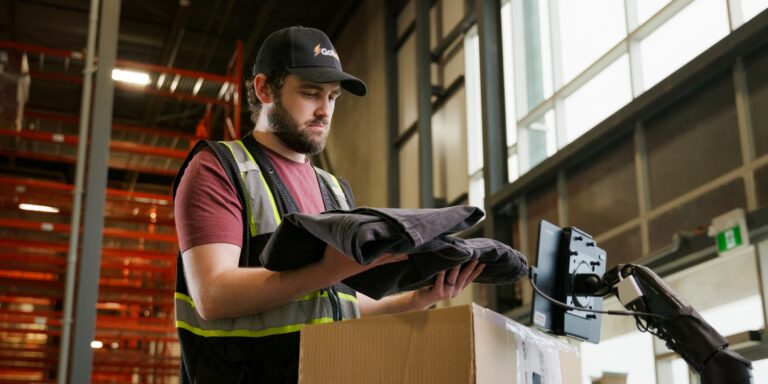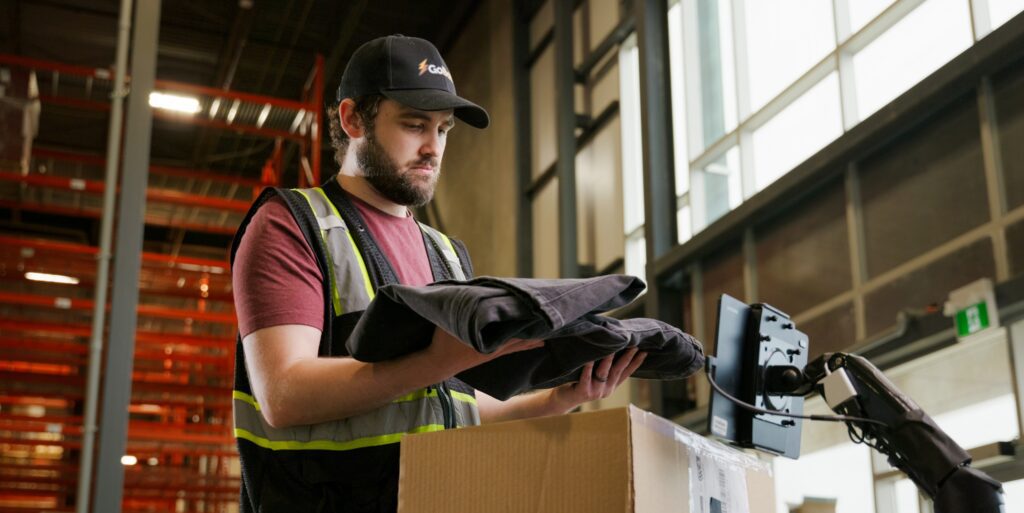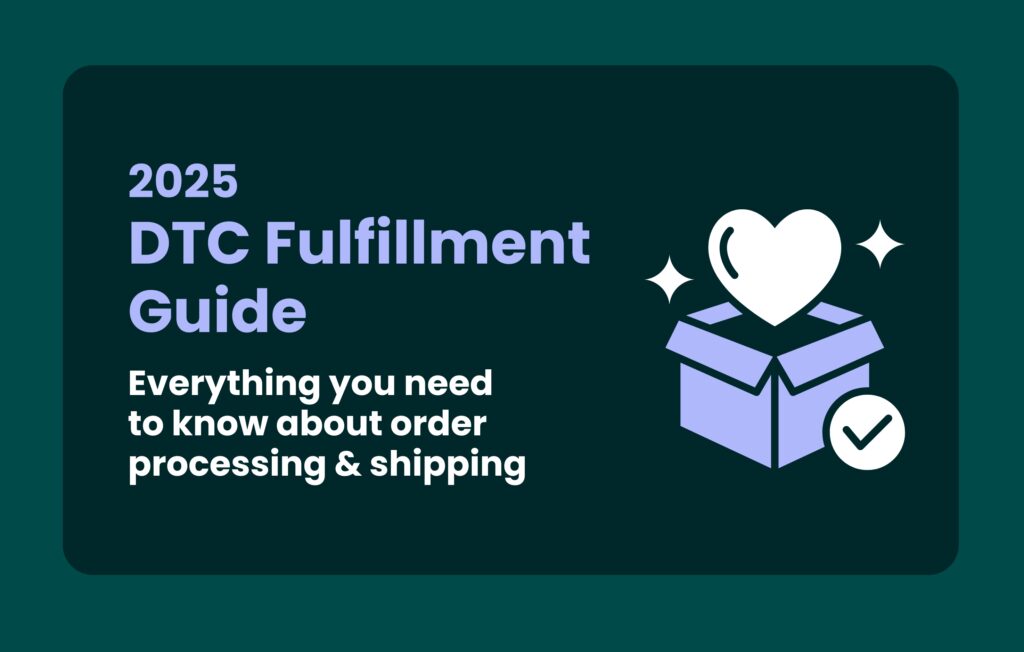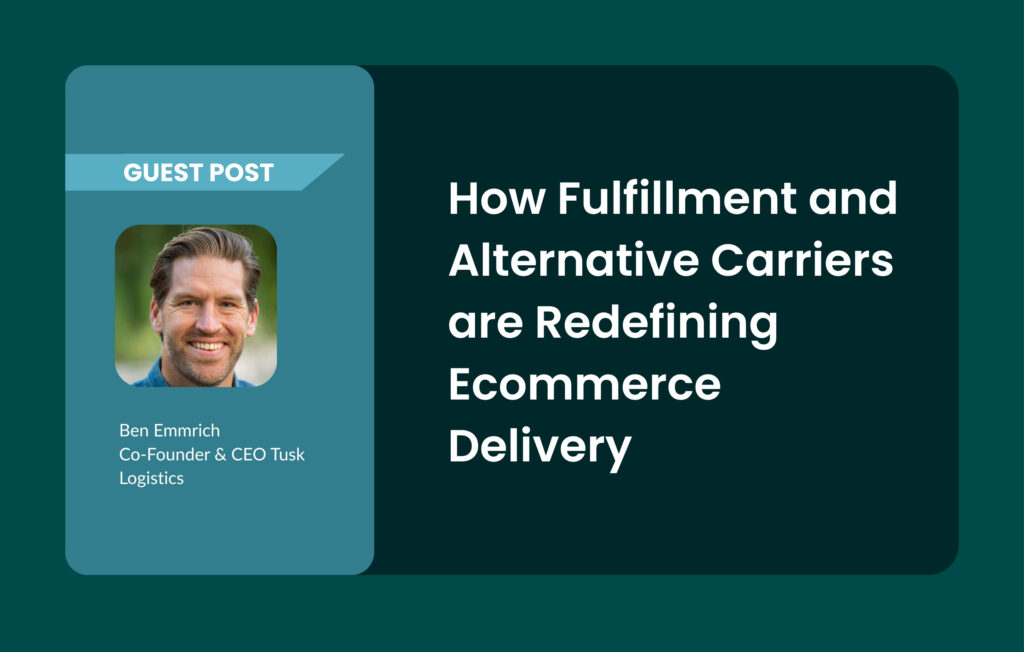Ecommerce returns have become a significant challenge for retailers, especially in the apparel industry. MasterCard predicted that retail ecommerce returns would spike by nearly 6% this year, largely due to shoppers adding more options to their carts to try on at home. For every $1 billion in sales, the average retailer incurs $145 million in merchandise returns. With online sales seeing a higher return rate (17.6%), it’s clear that finding solutions to reduce ecommerce returns is crucial. Leveraging AI alongside strategic partnerships with third-party logistics providers (3PLs) can make a substantial difference.
The Impact of Ecommerce Returns
Return rates in the apparel industry are notably high, often due to issues with size, fit, quality, and color discrepancies. According to Shopify, 75% of apparel returns are due to poor fit. With accurate and detailed size recommendations that give shoppers sizing confidence, these returns are easily avoidable. Returns strain financial and operational resources, making it critical for brands to find effective solutions.
Leveraging AI to Reduce Ecommerce Returns
AI technologies offer many innovative ways to tackle the problem of high return rates. Using these solutions, brands can reduce return rates and enhance the shopping experience, leading to higher customer satisfaction and more sales.
Improving Size and Fit Recommendations
One major reason for ecommerce returns is size issues. Companies like Bold Metrics are taking action to help brands reduce returns. Bold Metrics’ AI-driven technology creates accurate body measurements, allowing brands to offer precise size recommendations. This technology reduces the likelihood of shoppers receiving ill-fitting clothes, decreasing ecommerce return rates and increasing a shopper’s lifetime value.
“By taking the guesswork out of finding their size and taking fit preferences into consideration, customers can trust that their purchase will fit well, which reduces bracketing, increases conversions and lowers return rates,” says Daina Burnes, CEO of Bold Metrics.
Enhancing Product Descriptions and Images
AI can be used to enhance product descriptions and images, providing shoppers with a more accurate representation of product design and fit. These improved and detailed specifics can help shoppers make informed purchase decisions and reduce returns.
Another AI feature offered by Bold Metrics is their preferred fit. “We can go beyond recommending a size and provide in-depth information about how a garment will fit across a shopper’s body, so they can pick the best size based on their unique fit preference,” Burnes says. “The offshoot is the ability to determine individual customer fit with a high level of accuracy, translating into higher conversions.”
Predicting and Preventing Return-Prone Products
AI analyzes return patterns to identify products prone to being returned. By understanding these patterns, brands can make data-driven decisions in design and inventory management, ultimately reducing the occurrence of returns.
“Over time, our data should help you understand how consumers are fitting into products versus how designers are intending those products to fit. You have an opportunity to collect a huge amount of data on intended versus actual fit trends and bring it upstream so product designers can better understand how consumers are wearing these garments,” says Burnes
The Role of 3PLs in Reducing Returns
3PLs play a crucial role in managing returns efficiently. GoBolt streamlines the returns process, making it easier for brands to decrease costs, increase revenue, and get more returns back to stock. With detailed returns data, GoBolt provides unprecedented access to your returns patterns, helping you identify trends and solutions.
Collaborative Strategies for Apparel Brands and 3PLs
For apparel brands, reducing returns and improving customer satisfaction are key to maintaining profitability. By leveraging the expertise and capabilities of 3PLs, brands can implement effective strategies that address the challenges associated with returns.
Here are some collaborative strategies that apparel brands and 3PLs can use to work together effectively:
1. Shared Data and Insights
3PLs can provide a wealth of data and insights that are invaluable for improving return management. By sharing detailed information on return patterns, reasons for returns, and returned to stock data, brands can gain a deeper understanding of the issues that lead to returns.
This data can be used to:
- Identify Trends: Spot common reasons for returns, such as size discrepancies or quality issues, and address them proactively.
- Optimize Inventory Management: Adjust inventory levels based on return data to minimize overstocking and reduce the financial impact of returns.
2. Coordinated Customer Support
Coordinated customer support between brands and 3PLs is essential for providing a seamless and efficient service to shoppers. By working together, brands and 3PLs can ensure that shoppers receive consistent and timely support throughout their shopping journey. This involves:
- Unified Communication Channels: Establishing clear communication channels between the brand’s customer service team and the 3PL’s support staff to handle shopper inquiries and issues promptly.
- Streamlined Return Processes: Simplifying the return process for customers by providing easy-to-follow instructions and efficient handling of return requests.
3. Integration of Platforms & Tools
Integrating advanced tools and platforms within the 3PL framework can significantly enhance returns management. Tools like Loop, Aftership, Happy Returns, Frate, and Redo offer various functionalities that streamline the returns process and provide valuable insights.
Here’s how these tools can be leveraged:
- Loop: Automates the return process, making it easier for shoppers to initiate returns and for brands to manage them efficiently. It also provides analytics to identify return patterns and areas for improvement.
- Aftership: Automates the return process and provides real-time tracking of returns, ensuring that both customers and brands are updated on the status of return shipments. This transparency helps to reduce customer anxiety and improve satisfaction.
- Happy Returns: Offers a network of physical return locations where customers can drop off their returns, providing a convenient and efficient return option.
- Frate: Automates the return process, helping shoppers initiate returns and for brands to manage them efficiently. Aims to reduce the number of returns initiated to decrease costs and emissions.
Final Thoughts
Reducing returns is crucial for improving the bottom line of ecommerce brands, particularly in the apparel industry. By leveraging AI technologies and partnering with innovative 3PLs like GoBolt, brands can tackle return issues head-on, ensuring better customer satisfaction and operational efficiency.
Interested in learning more about how GoBolt can help your brand improve returns and improve shopper satisfaction? Contact us today to find out how our innovative solutions can transform your return management process.








